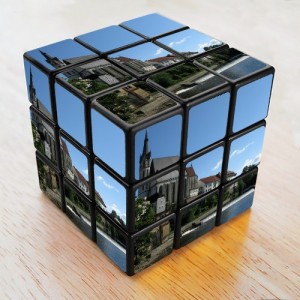Laura Bonnor
Throughout this course, my concept of literacy has been challenged and has certainly evolved. (Bolter, 2001) (Ong, 1982) (Hayles, 2003) Although, I’ve always recognized the complex nature of literacy, I’ve come to a new understanding of its intricacies. The key role that is played by oral language and the far-reaching implications of new media and technology, have been brought into focus. Discussions on the Blackboard were always challenging but a highlight for me was managing to work on commentary 2 with Soraya Rajan on the other side of the world. Technology is having a great effect on how we are able to work together and understand each other. My examination of the history of the codex and the invention of the printing press, along with many of the works of the other students (Rita Santillan, Camille Maydonik and Chris Aitken to name a few), however, leads me to see this complexity as the natural evolution of our ability to communicate using the tools we devise. I was heartened to explore the work of Katherine Hayles and to visit the websites (http://www.diigo.com/list/lbonnor/hypertext540) of many of the new literary artists that she mentions in her talks. In a way, we are arriving at a new horizon in human communication. I’m a little concerned by Hayles’ use of the term “post-human” referring to our new bond with the machine but then one cannot deny the unbridled enthusiasm that is demonstrated by technicians and philosophers such as Ray Kurzweil. As Bolter puts it our understanding of literacy and electronic writing can be seen “not just as a tool for rational thought, but rather as a reflection of a fragmented and constantly changing postmodern identity.” (Bolter, 2001) It seems we have arrived at our “Brave New World” but rather than be fearful of it, we can take Postman’s and Kress’s guidance and inform ourselves of the promise and pitfalls, the gains and losses. I see multi-literacy and media assisted literacy as opening so many doors for understanding for students who struggle with traditional literacy.
References
Bolter, Jay David. (2001). Writing space: Computers, hypertext, and the remediation of print [2nd edition]. Mahwah, NJ: Lawrence Erlbaum.
Hayles, Katherine. (2003). Deeper into the Machine: The Future of Electronic Literature. Culture Machine. 5. Retrieved, August 2, 2009, from http://www.culturemachine.net/index.php/cm/article/viewArticle/245/241
Kress, Gunter. (2005). “Gains and losses: New forms of texts, knowledge and learning. Computers and Composition. 22(1), 5-22. Retrieved, August 15, 2009, from http://dx.doi.org/10.1016/j.compcom.2004.12.004
Ray Kurzweil, (2005) The Singularity is Near, Viking, ISBN: 0670033847
Retrieved on Sept. 18 from http://singularity.com/bookexcerpts.html
Postman, N. (1992). Technopoly: The surrender of culture to technology. New York: Vintage Books
Neil Postman Ponders High Tech, Jan 17, 1996 (abc forum) http://www.pbs.org/newshour/forum/january96/postman_1-17.html



